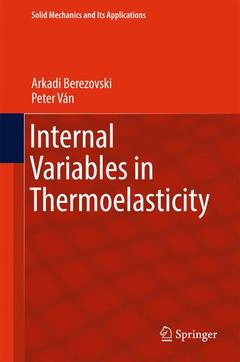Description
Internal Variables in Thermoelasticity, 1st ed. 2017
Solid Mechanics and Its Applications Series, Vol. 243
Authors: Berezovski Arkadi, Ván Peter
Language: English
Subject for Internal Variables in Thermoelasticity:
Approximative price 105.49 €
In Print (Delivery period: 15 days).
Add to cartPublication date: 05-2017
Support: Print on demand
Approximative price 105.49 €
In Print (Delivery period: 15 days).
Add to cartPublication date: 07-2018
Support: Print on demand
Description
/li>Contents
/li>Comment
/li>
This book describes an effective method for modeling advanced materials like polymers, composite materials and biomaterials, which are, as a rule, inhomogeneous. The thermoelastic theory with internal variables presented here provides a general framework for predicting a material?s reaction to external loading. The basic physical principles provide the primary theoretical information, including the evolution equations of the internal variables.
The cornerstones of this framework are the material representation of continuum mechanics, a weak nonlocality, a non-zero extra entropy flux, and a consecutive employment of the dissipation inequality. Examples of thermoelastic phenomena are provided, accompanied by detailed procedures demonstrating how to simulate them.
Describes the construction of advanced continuum theories
Includes coupling between mechanical and thermal effects
Helps readers obtain the necessary skills for creating new models using internal variables
Includes supplementary material: sn.pub/extras

